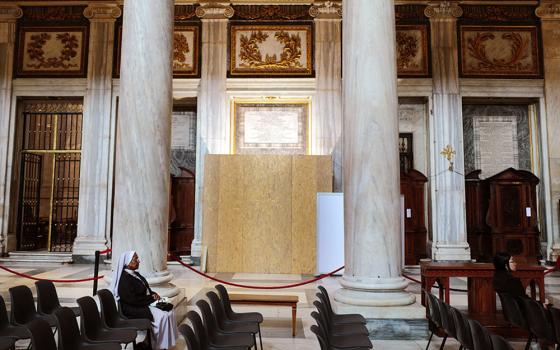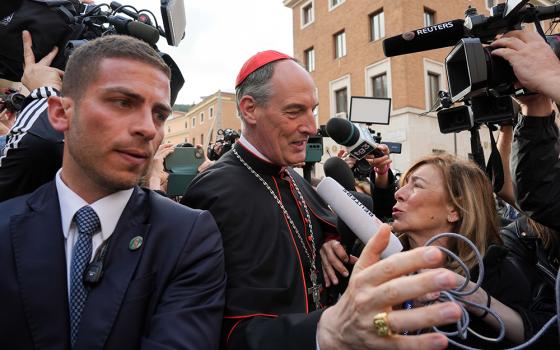Yesterday, I began a discussion of John Noonan’s “The Lustre of Our Country: The American Experience of Religious Freedom.” And, I finished on what I think is a key issue, namely, the extent to which the reduction of religion to ethics in the public square actually represents a triumph for secularism, a kind of utilitarianism which, over time, leaves even the ethical teachings themselves vulnerable because they are so publicly divorced from the truth claims from which they originally flowed. This is my central theological, as opposed to political, frustration with the Catholic neo-cons like Weigel, George and Douthat. They speak about the fear of secularization but do not realize how far down the slope they already are. Nor do they recognize that this reduction of religion to ethics not only represents a diminishment of faith, but a diminishment of reason as well.
Noonan’s book, however, is about a specific kind of reasoning, legal reasoning, and the chapter in which he examines the Supreme Court’s jurisprudence on the First Amendment’s religion clauses is one of his finest intellectual and literary achievements. Especially for someone like myself who is not a lawyer, Noonan’s facility with literary devices to make his case is entirely welcome. In this exposition of jurisprudence, he introduces us to Samuel Simple, a newly appointed judge who is intent on keeping religion and government out of each others’ way and assumes it should be fairly easy to accomplish. Simple engages with three sets of interlocutors to discuss how the Court has interpreted the First Amendment.
One of Simple’s interlocutors explains that even if one agrees with the idea that there should be a “wall of separation,” between the two, it is not always easy to decide where to build it. Here is an excerpt from the text that captures Noonan’s wit and precision:
“Well, as a matter of fact, it’s been extraordinarily hard to work out,” interjected Boaltman. “In Everson itself, for example, Justice Black thought providing transportation to parochial-school pupils was not aiding a religious institution. To cut off the busing of children to the religious schools, he suggested, would be like cutting the schools off from police protection or the fire department. It wouldn’t be neutral; it would be hostile.”
“That’s obvious,” said Simple. “So where’s the difficulty?”
“After awhile,” said Boaltman, “the question came up of letting a state pay for transporting parochial-school children on school field trips. That was busing too. It helped the children. It was what the state did for children in public schools. So why shouldn’t it be done for parochial-school children? The court said it was unconstitutional. It broke down the wall.”
“I had no idea,” Simple remarked, “that the Constitution was so precise.”
Splendid. Simple goes on to examine similar “precise” line-drawing by the court, for instance, its decision to sanction the purchase of textbooks for parochial schools, but not to purchase maps or globes. And, its decision that remedial assistance could not be offered to parochial-school students at state expense, but then it could, but it still could not pay for any regular, non-religious curriculum at the school. And, why the prohibition on state aid to religious elementary and high schools does not really apply to religious colleges and universities. Here is another gem:
“How about a tax deduction for [parochial school] tuition?” Simple asked.
“It depends,” said Boaltman. “A deduction of $40 per child given poor parents in New York is unconstitutional. A deduction of $700 per child in Minnesota is constitutional.”
“That couldn’t be because Justices Burger and Blackmun came from Minnesota, could it?” Simple asked naively.
Noonan, in short, navigates the reader through the many curves in the road of First Amendment jurisprudence with wit, insight, a healthy dose of suspicion and, at the same time, a deep love for the law and the way it develops over time. We learn about the difficulty the Jehovah’s Witnesses had in securing their right to conscientious objector status. We learn about the legally permitted persecution of the Mormons. We learn about the Court’s dealings with the Amish, telling them they must pay Social Security taxes, but they do not have to send their children to school.
This chapter is a must-read for anyone who is trying to understand the controversy over the
Noonan is quite harsh on the Supreme Court’s decision in Employment Division v. Smith, the 1990 Supreme Court decision authored by Justice Antonin Scalia that seeks to restrict the scope of religious freedom appeals to the courts. I, too, have my problems with that decision. But, I want to note the contrary opinion of Rick Garnett, to whom I look for legal guidance. Garnett has written of Smith:
“And so, the question that Smith answers is not: Is the free exercise of religion a good thing, and a fundamental human right? Nor is it: Should governments accommodate religiously motivated requests for exemptions from generally applicable laws? Smith can be read as saying “yes” to both of these questions—at least, it need not be read as saying “no” to them—and we should say “yes” to them too. However, the question that is the case’s focus is, perhaps, more prosaic: When it comes to the means to be employed, the balance to be struck, and the costs to be absorbed in connection with the accommodation of religiously motivated objections to otherwise valid regulations aimed at protecting and securing the common good, who decides? According to Smith, the undisputed importance of religious liberty does not require that it be an unelected federal judge.
“That there are things that matter very much—decisions that are very important, and that go to the heart of our constitutional enterprise—but that are nevertheless, for the most part, best handled politically and not through judicial review, is not an unfamiliar or novel idea.”
Garnett is undoubtedly on to something, and it is good to remember that there are always other issues involved in any given case. (You can read his essay here.) But, my problem with Garnett’s take on Scalia’s decision is, of course, that legislatures are not always very good at protecting minority rights. Somewhere, someone is always going to be without a voice in a legislature to defend their First Amendment rights. This is not mere conjecture or fear-mongering. Consider these anti-sharia laws being passed in certain Republican dominated states! To his credit, Garnett has written strongly in opposition to such laws. But, if the legislature passes them, and the governor signs them, should not the people affected have recourse to the courts?
But, back to Noonan. He takes on, or better to say, takes down Durkheim’s reductionist view of religion. He deploys Bellah’s thoughts on civil religion to aid him in that task, writing,
“Civil religion performs a Durkheimian function, but it seeks the approbation of God. Durkheim’s atheism is absent. Civil religion synthesizes American history and heroes with biblical notions of divine destiny, supervision, reward, and retaliation. It is not the nation worshipping itself. It is the creed, symbols, and ceremonies uniting, directing inspiring the nation.
“For Bellah, the civil religion was not an unconstitutional establishment of religion. For him the liberalism that saw the state as a ‘purely neutral legal mechanism without purposes or values’ was a ‘reductio ad absurdum and a sociological impossibility.’ Historically a neutral state has never existed….Bellah’s powerful representation, drawing on Durkheim without succumbing to the monstrous implication that Leviathan must worship itself, is seductive in offering a vision for believers and troublesome and even outrageous to champions of absolute separation of the state from religion.”
I tell you – if you expect such lucid, forceful prose from all your lawyer friends as you find in this book, you will be sorely disappointed.
There are problems with this book, to be sure. For example, Noonan cites a 1774 letter from Madison in which Madison wrote: “If the Church of England had been the established and general Religion in all the Northern Colonies as it has been among us here and uninterrupted tranquility had prevailed throughout the Continent, It is clear to me that slavery and Subjection might and would have been gradually insinuated among us…” Noonan notes, “The ‘slavery’ in question is not chattel slavery. ‘Slavery’ was a metaphor easily derived from what JM saw about him on Virginia plantations, for the mental stagnation to which uniformity of religious opinions led.” Noonan is right that “slavery” in this context is a metaphor but it is a more precise metaphor than Noonan apparently recognizes. And, it is likely not rooted in any general survey of the socio-cultural landscape. “Slavery” was a key concept in the country whig ideology that had been born out of the English Civil War and the so-called Glorious Revolution. Bishop Benjamin Hoadly’s sermons and letters were well known in whig circles on both sides of the Atlantic through the ever-busy printing presses of pamphleteers Trenchard and Gordon. Defending the deposition of the Catholic King James II in 1688, Hoadly opined that had the people failed to remove him, they would have allowed the gospel to “patronize the most abject, the most universal Slavery.” If Madison did not know Hoadly’s commentaries, there were other such writers who used “slavery” in this highly specific context, and he surely knew the words to the popular tune, Rule Brittania, the chorus of which concludes with the assertion that “Britons never will be slaves.” For them, this meant not being French, that is, not being subject to an arbitrary government and to “priestcraft.” So, “slavery” was a more loaded, and decidedly anti-Catholic, metaphor than Noonan lets on.
Judge Noonan is one of America’s leading intellectual lights and I would give any limb to seem him engage in a public discussion on these issues with someone like Brad Gregory, whose “Unintended Reformation” touches on some of the deeper issues that Noonan hints at but does not fully engage, or with David Schindler, who is the most engaging and incisive theologian practicing the craft in the US today, and whose insights into the ways the modern liberal state, despite its claims to the contrary, forces certain un-Christian anthropological assumptions on us, have never been rebutted by the America-worshipping neo-cons. That said, his temperament is that of a judge, not an intellectual, the temperament of one who gets nervous about sweeping interpretative models, who wants to stay close to the facts and the law, who understands that the progress of nations is slow and uncertain. When that temperament combines with the weighty intellectual issues raised in this book, issues Noonan is certainly capable of treating insightfully, the result is a masterpiece.




